I have been working on a JavaScript implementation of the early 90's adventure games and specifically plotting a path from the place the hero is standing to the location the player has clicked on. My approach is to first determine if a strait line (without obstructions) can be drawn, if not then to search for a path of clear way-points using Brian Grinstead's excellent javascript-astar. The problem I'm facing however is the path (while optimal will veer into spaces that would seem to the user an unintended. Here is a classic example of what I'm talking about (the green path is the generated path, the red dots are each turns where the direction of the path changes):

Now I know that A* is only guaranteed to return a path that cannot be simpler (in terms of steps), but I'm struggling to implement a heuristic that weights turns. Here is a picture that show two other paths that would also qualify as just as simple (with an equal number of steps)

The Blue path would present the same number of steps and turns while the red path has the same number of steps and fewer turns. In my code I have a simplifyPath() function that removes steps where the direction changes, so if I could get all possible paths from astar then I could select the one with the least turns, but that's not how A* fundamentally works, so I'm looking for a way to incorporate simplicity into the heuristic.
Here is my current code:
var img,
field = document.getElementById('field'),
EngineBuilder = function(field, size) {
var context = field.getContext("2d"),
graphSettings = { size: size, mid: Math.ceil(size/2)},
engine = {
getPosition: function(event) {
var bounds = field.getBoundingClientRect(),
x = Math.floor(((event.clientX - bounds.left)/field.clientWidth)*field.width),
y = Math.floor(((event.clientY - bounds.top)/field.clientHeight)*field.height),
node = graph.grid[Math.floor(y/graphSettings.size)][Math.floor(x/graphSettings.size)];
return {
x: x,
y: y,
node: node
}
},
drawObstructions: function() {
context.clearRect (0, 0, 320, 200);
if(img) {
context.drawImage(img, 0, 0);
} else {
context.fillStyle = 'rgb(0, 0, 0)';
context.fillRect(200, 100, 50, 50);
context.fillRect(0, 100, 50, 50);
context.fillRect(100, 100, 50, 50);
context.fillRect(0, 50, 150, 50);
}
},
simplifyPath: function(start, complexPath, end) {
var previous = complexPath[1], simplePath = [start, {x:(previous.y*graphSettings.size)+graphSettings.mid, y:(previous.x*graphSettings.size)+graphSettings.mid}], i, classification, previousClassification;
for(i = 1; i < (complexPath.length - 1); i++) {
classification = (complexPath[i].x-previous.x).toString()+':'+(complexPath[i].y-previous.y).toString();
if(classification !== previousClassification) {
simplePath.push({x:(complexPath[i].y*graphSettings.size)+graphSettings.mid, y:(complexPath[i].x*graphSettings.size)+graphSettings.mid});
} else {
simplePath[simplePath.length-1]={x:(complexPath[i].y*graphSettings.size)+graphSettings.mid, y:(complexPath[i].x*graphSettings.size)+graphSettings.mid};
}
previous = complexPath[i];
previousClassification = classification;
}
simplePath.push(end);
return simplePath;
},
drawPath: function(start, end) {
var path, step, next;
if(this.isPathClear(start, end)) {
this.drawLine(start, end);
} else {
path = this.simplifyPath(start, astar.search(graph, start.node, end.node), end);
if(path.length > 1) {
step = path[0];
for(next = 1; next < path.length; next++) {
this.drawLine(step, path[next]);
step = path[next];
}
}
}
},
drawLine: function(start, end) {
var x = start.x,
y = start.y,
dx = Math.abs(end.x - start.x),
sx = start.x<end.x ? 1 : -1,
dy = -1 * Math.abs(end.y - start.y),
sy = start.y<end.y ? 1 : -1,
err = dx+dy,
e2, pixel;
for(;;) {
pixel = context.getImageData(x, y, 1, 1).data[3];
if(pixel === 255) {
context.fillStyle = 'rgb(255, 0, 0)';
} else {
context.fillStyle = 'rgb(0, 255, 0)';
}
context.fillRect(x, y, 1, 1);
if(x === end.x && y === end.y) {
break;
} else {
e2 = 2 * err;
if(e2 >= dy) {
err += dy;
x += sx;
}
if(e2 <= dx) {
err += dx;
y += sy;
}
}
}
},
isPathClear: function(start, end) {
var x = start.x,
y = start.y,
dx = Math.abs(end.x - start.x),
sx = start.x<end.x ? 1 : -1,
dy = -1 * Math.abs(end.y - start.y),
sy = start.y<end.y ? 1 : -1,
err = dx+dy,
e2, pixel;
for(;;) {
pixel = context.getImageData(x, y, 1, 1).data[3];
if(pixel === 255) {
return false;
}
if(x === end.x && y === end.y) {
return true;
} else {
e2 = 2 * err;
if(e2 >= dy) {
err += dy;
x += sx;
}
if(e2 <= dx) {
err += dx;
y += sy;
}
}
}
}
}, graph;
engine.drawObstructions();
graph = (function() {
var x, y, rows = [], cols, js = '[';
for(y = 0; y < 200; y += graphSettings.size) {
cols = [];
for(x = 0; x < 320; x += graphSettings.size) {
cols.push(context.getImageData(x+graphSettings.mid, y+graphSettings.mid, 1, 1).data[3] === 255 ? 0 : 1);
}
js += '['+cols+'],\n';
rows.push(cols);
}
js = js.substring(0, js.length - 2);
js += ']';
document.getElementById('Graph').value=js;
return new Graph(rows, { diagonal: true });
})();
return engine;
}, start, end, engine = EngineBuilder(field, 10);
field.addEventListener('click', function(event) {
var position = engine.getPosition(event);
if(!start) {
start = position;
} else {
end = position;
}
if(start && end) {
engine.drawObstructions();
engine.drawPath(start, end);
start = end;
}
}, false);#field {
border: thin black solid;
width: 98%;
background: #FFFFC7;
}
#Graph {
width: 98%;
height: 300px;
overflow-y: scroll;
}<script src="http://jason.sperske.com/adventure/astar.js"></script>
<code>Click on any 2 points on white spaces and a path will be drawn</code>
<canvas id='field' height
='200' width='320'></canvas>
<textarea id='Graph' wrap='off'></textarea>After digging into Michail Michailidis' excellent answer I've added the following code to my simplifyPath() function) (demo):
simplifyPath: function(start, complexPath, end) {
var previous = complexPath[1],
simplePath = [start, {x:(previous.y*graphSettings.size)+graphSettings.mid, y:(previous.x*graphSettings.size)+graphSettings.mid}],
i,
finalPath = [simplePath[0]],
classification,
previousClassification;
for(i = 1; i < (complexPath.length - 1); i++) {
classification = (complexPath[i].x-previous.x).toString()+':'+(complexPath[i].y-previous.y).toString();
if(classification !== previousClassification) {
simplePath.push({x:(complexPath[i].y*graphSettings.size)+graphSettings.mid, y:(complexPath[i].x*graphSettings.size)+graphSettings.mid});
} else {
simplePath[simplePath.length-1]={x:(complexPath[i].y*graphSettings.size)+graphSettings.mid, y:(complexPath[i].x*graphSettings.size)+graphSettings.mid};
}
previous = complexPath[i];
previousClassification = classification;
}
simplePath.push(end);
previous = simplePath[0];
for(i = 2; i < simplePath.length; i++) {
if(!this.isPathClear(previous, simplePath[i])) {
finalPath.push(simplePath[i-1]);
previous = simplePath[i-1];
}
}
finalPath.push(end);
return finalPath;
}
Basically after it reduces redundant steps in the same direction, it tries to smooth out the path by looking ahead to see if it can eliminate any steps.

 Case 1: After
Case 1: After
 Case 2: Before
Case 2: Before
 Case 2: After
Case 2: After
 Case 3: Before
Case 3: Before
 Case 3: After
Case 3: After
 Case 4: Before
Case 4: Before
 Case 4: After
Case 4: After
 Resources:
Resources: